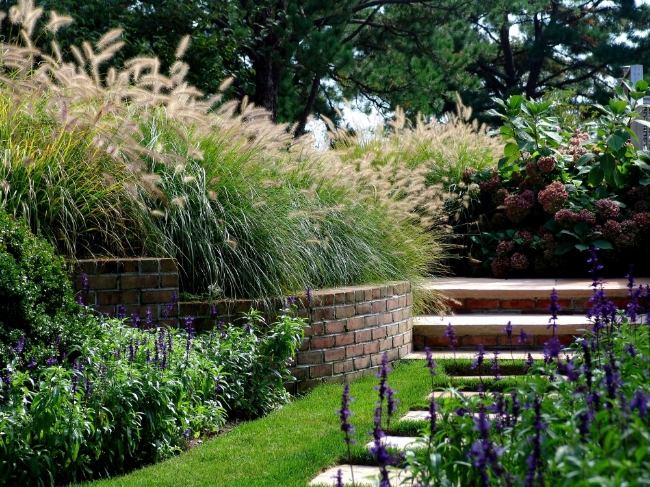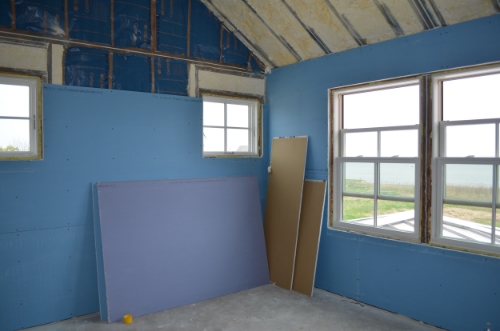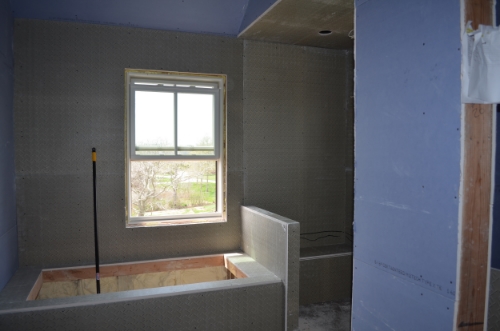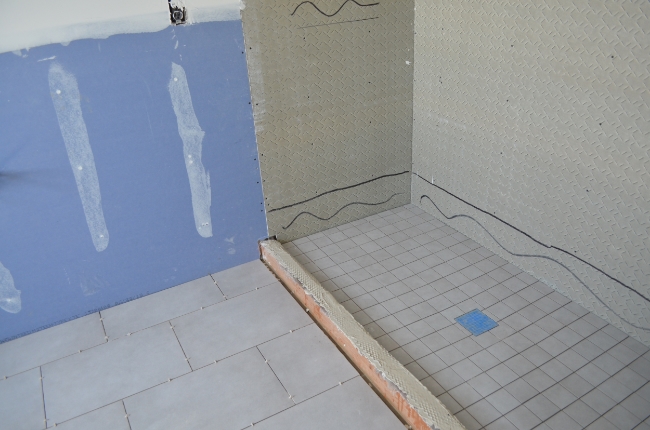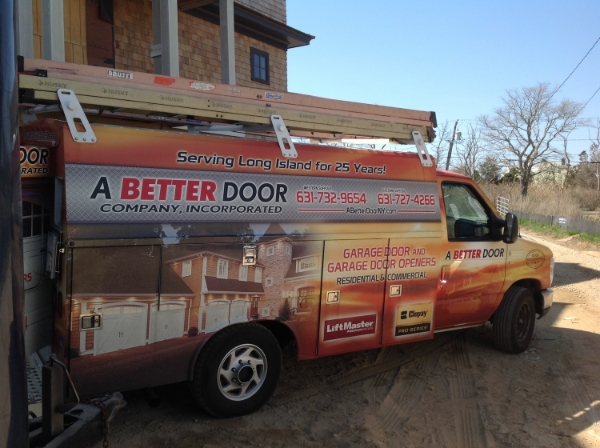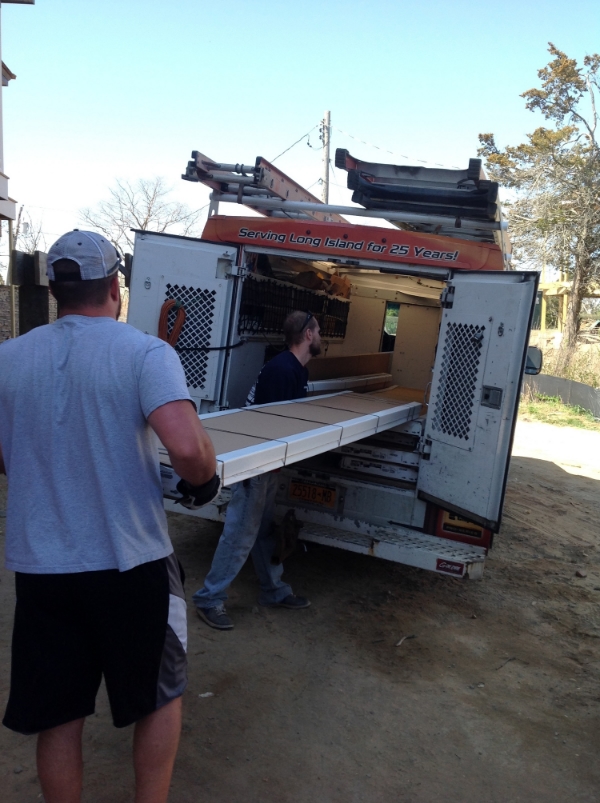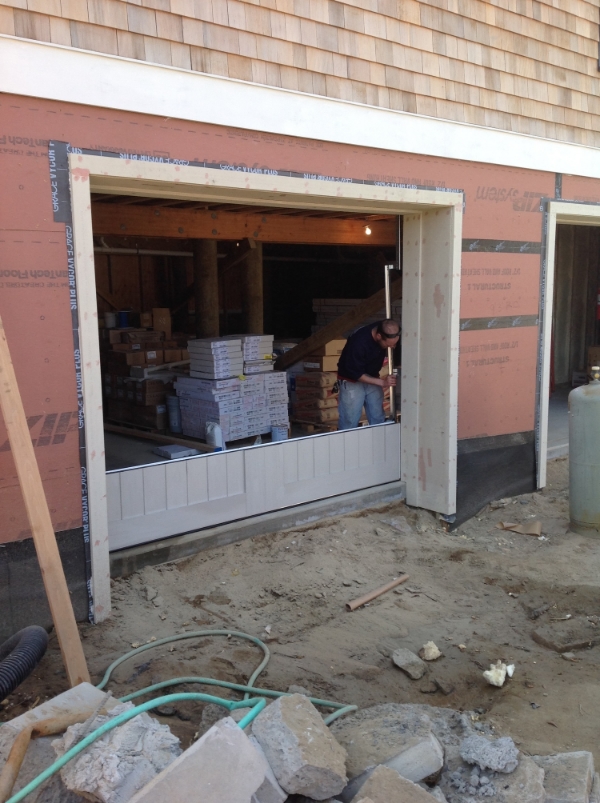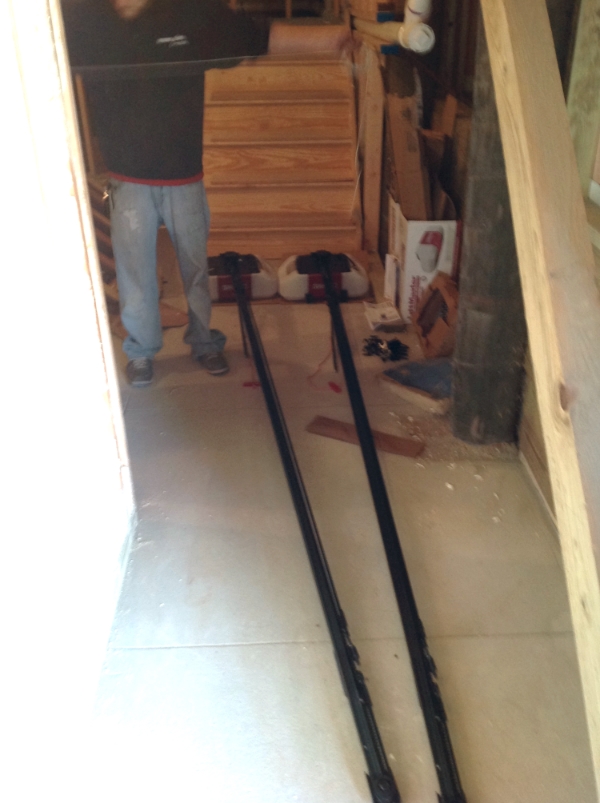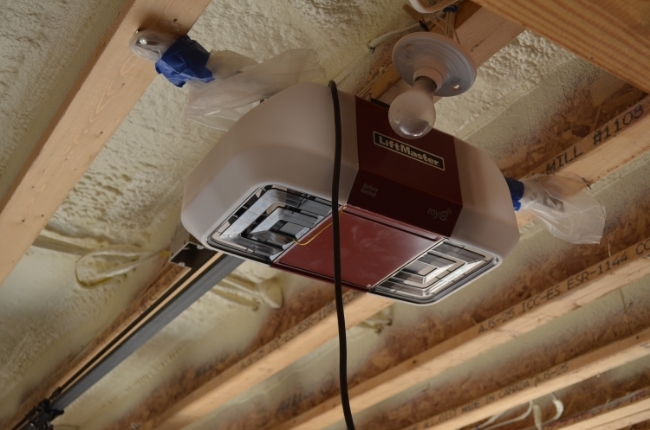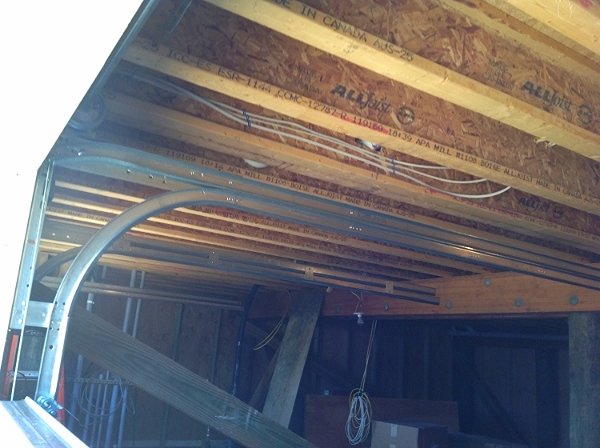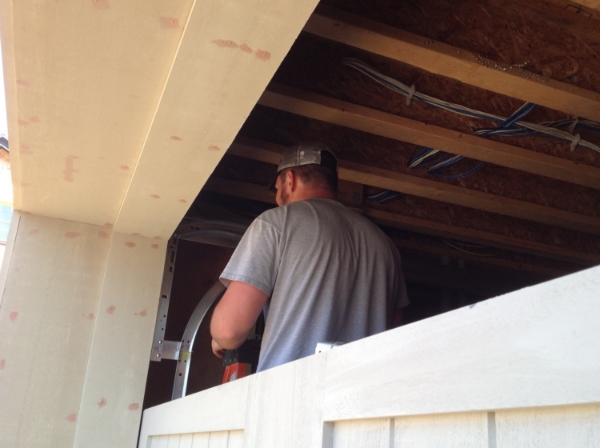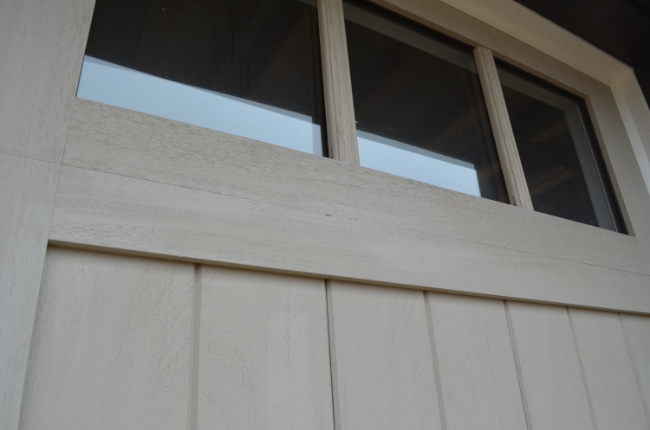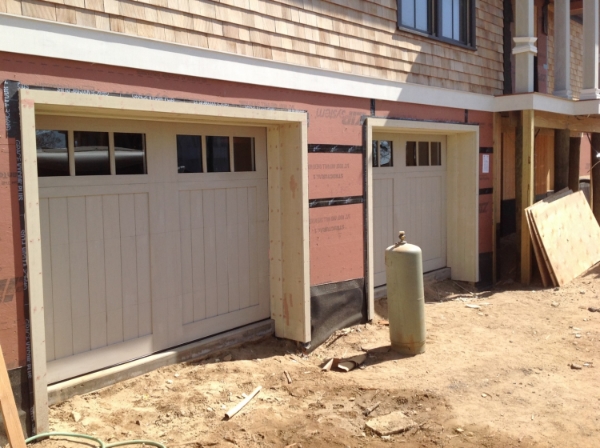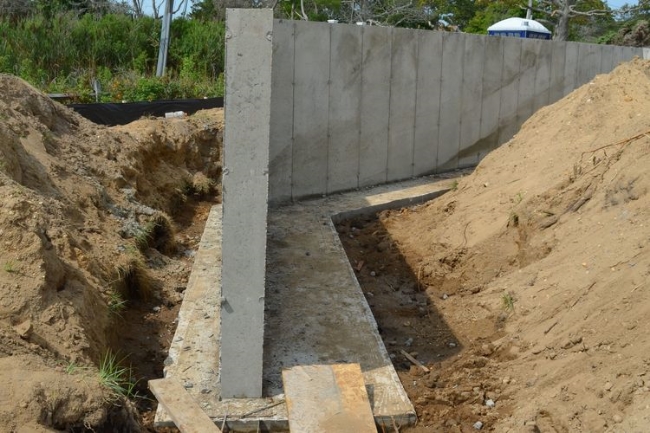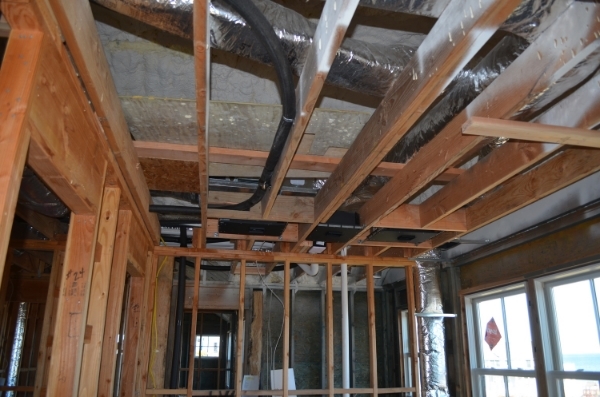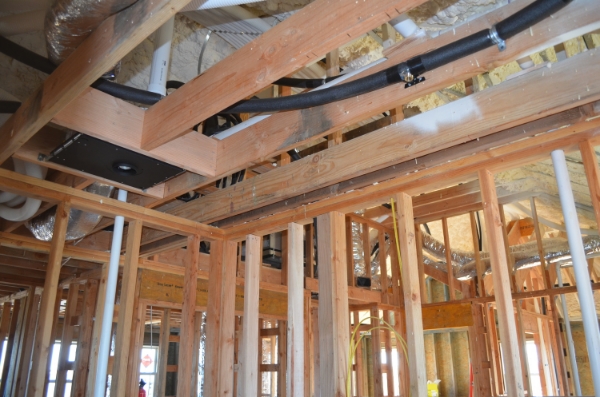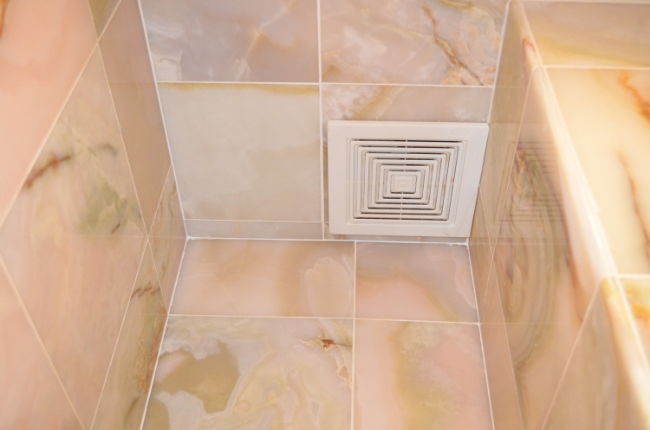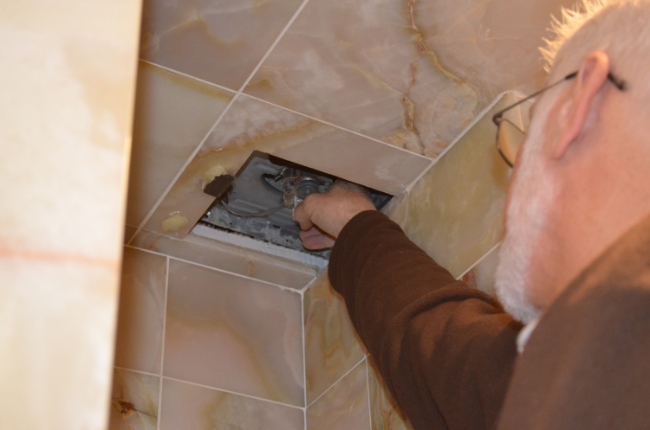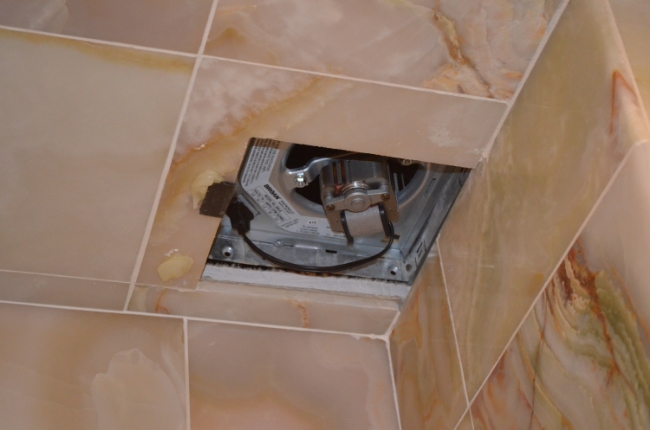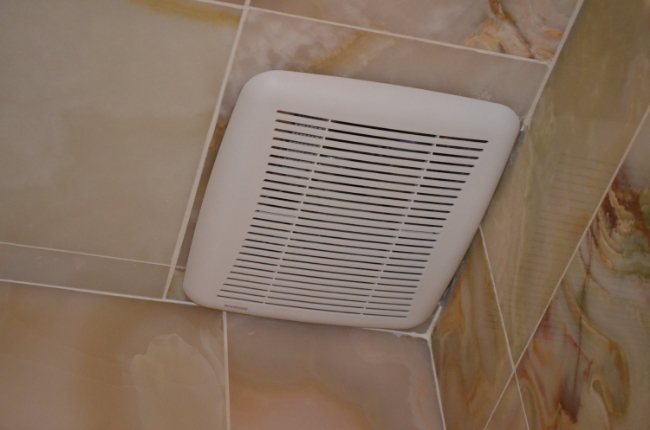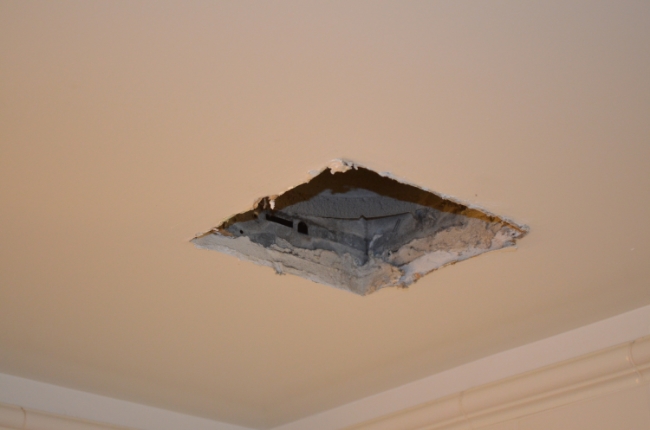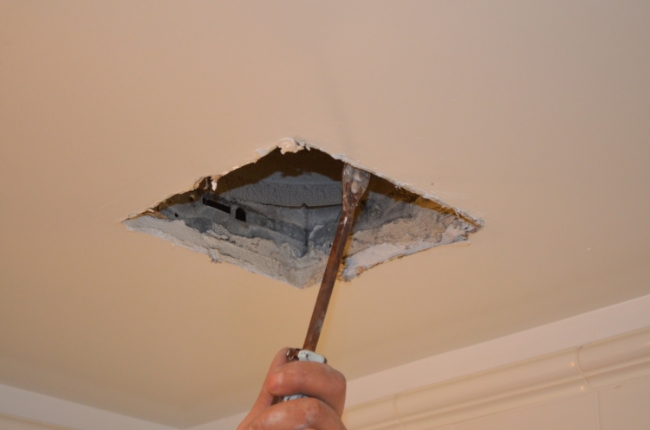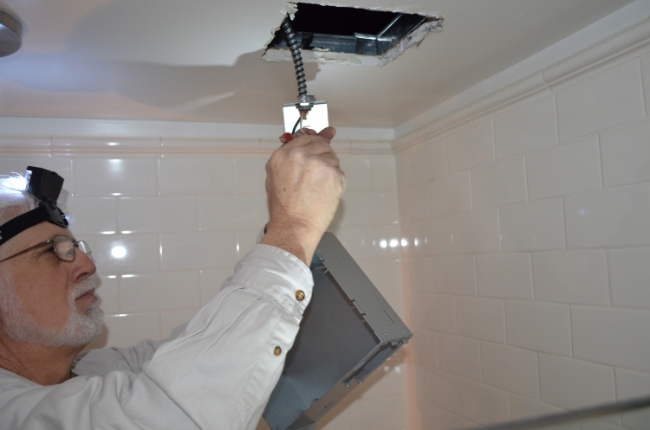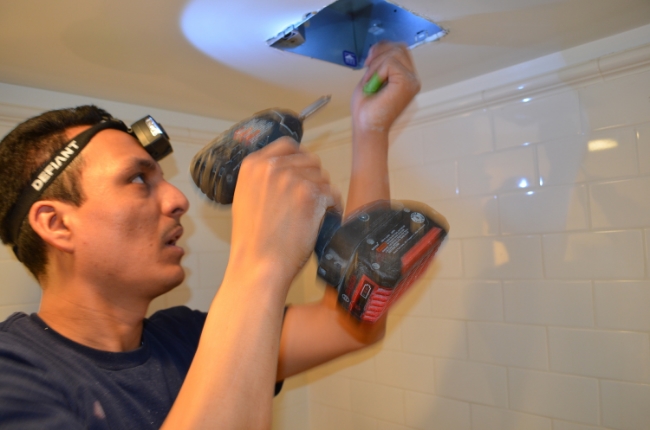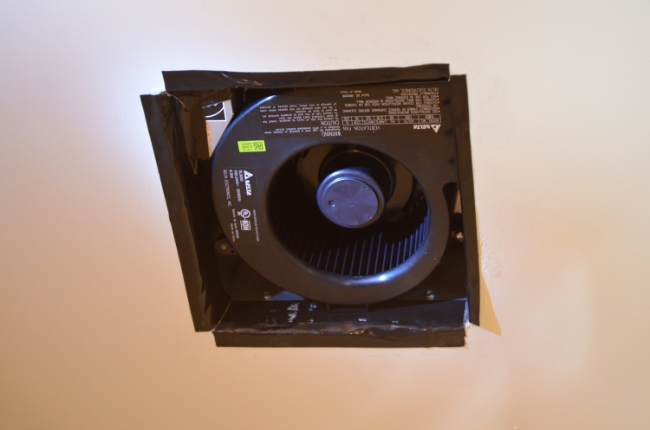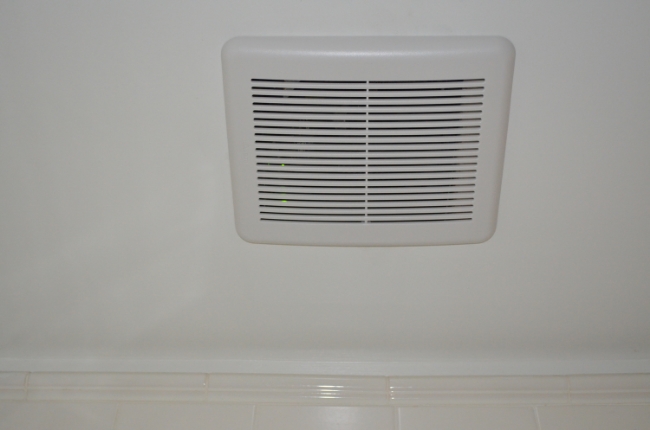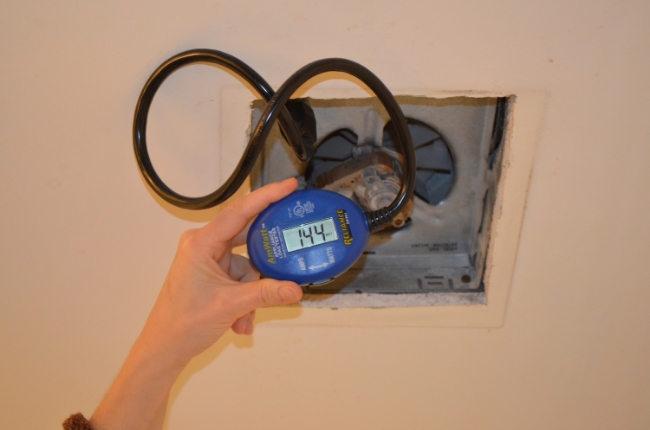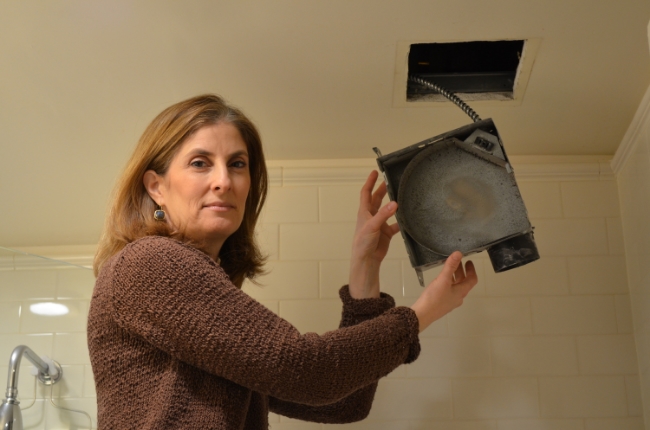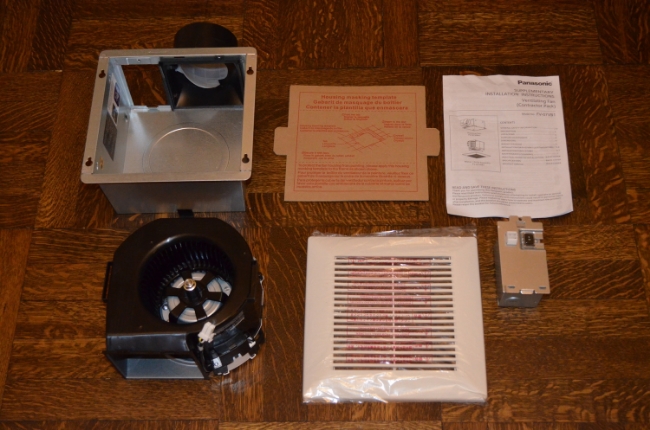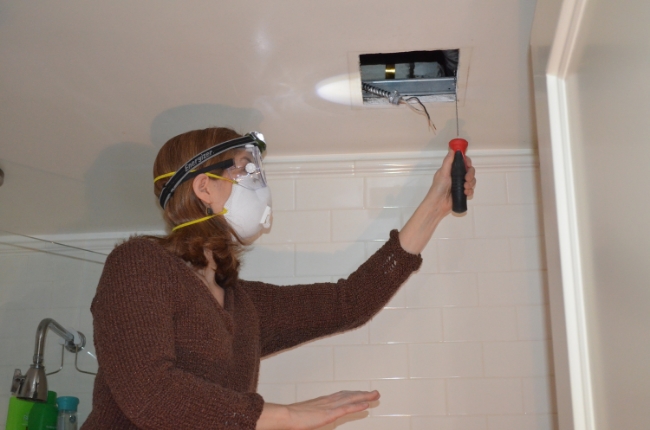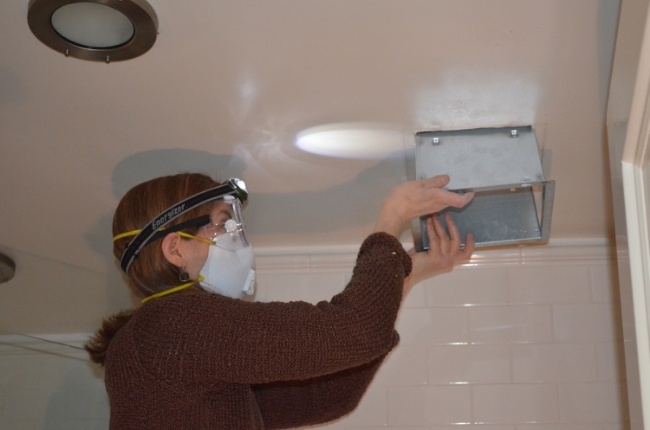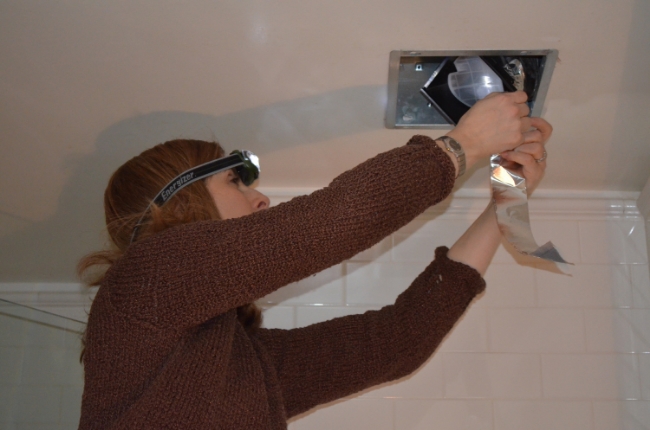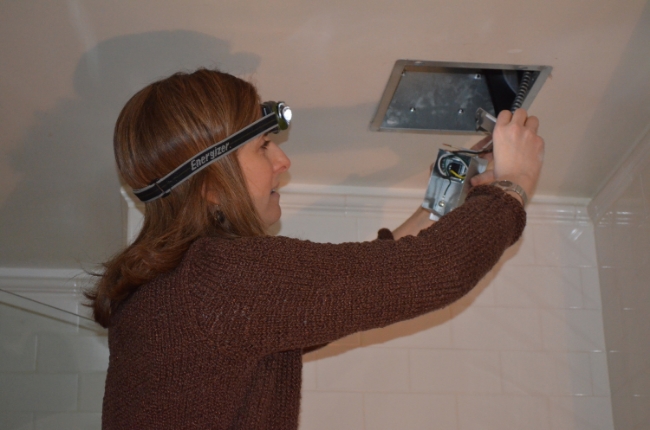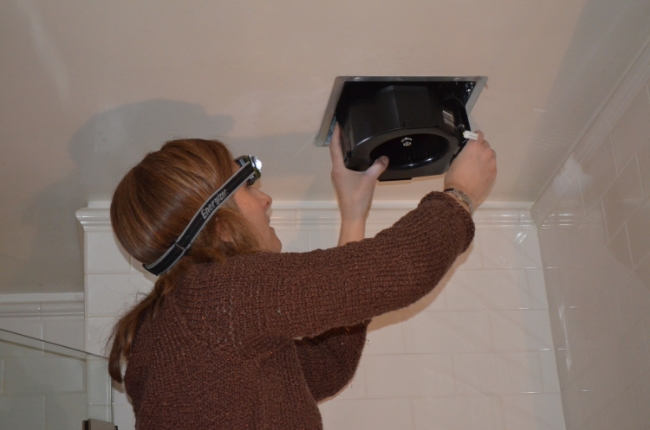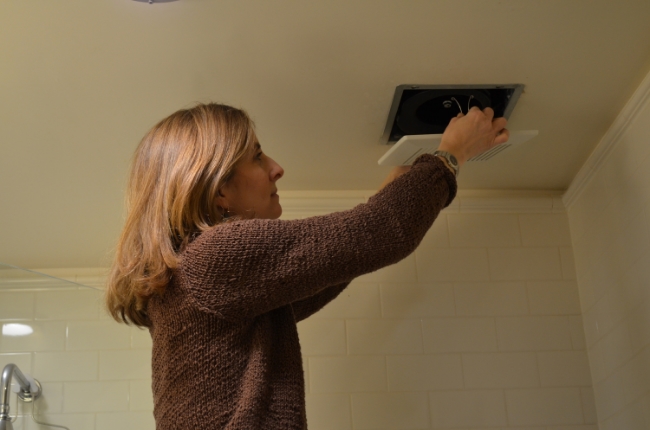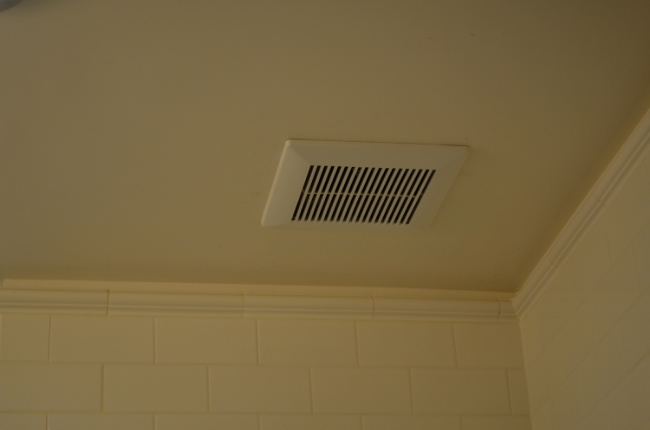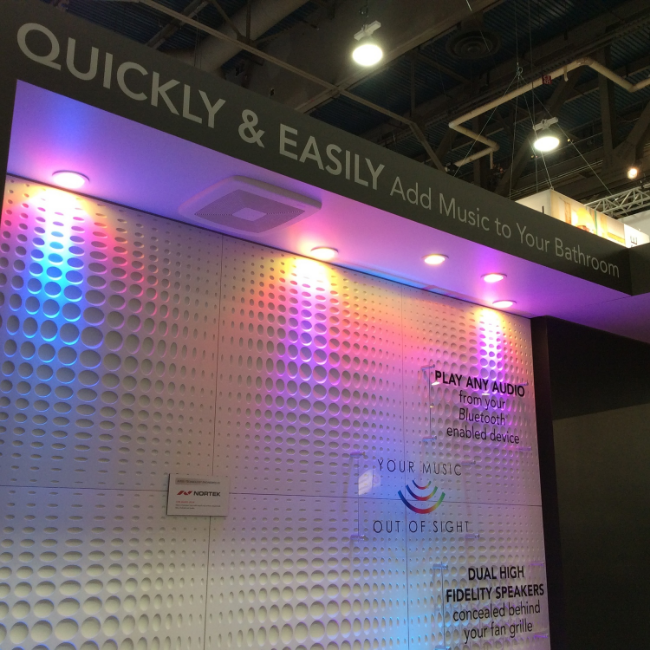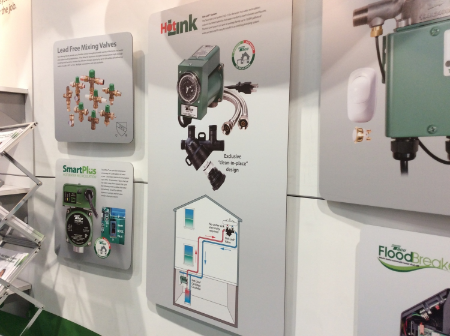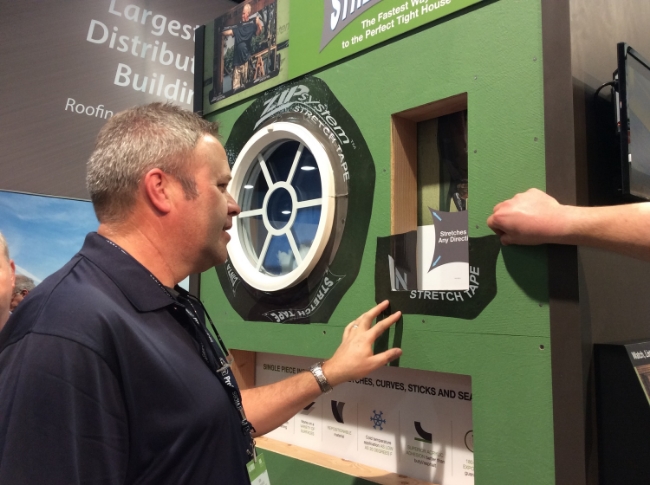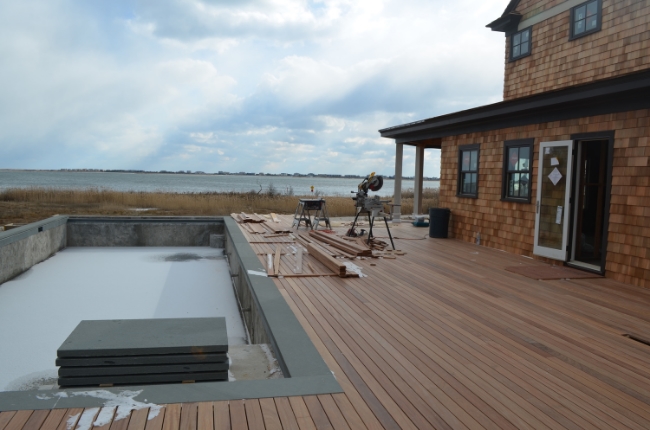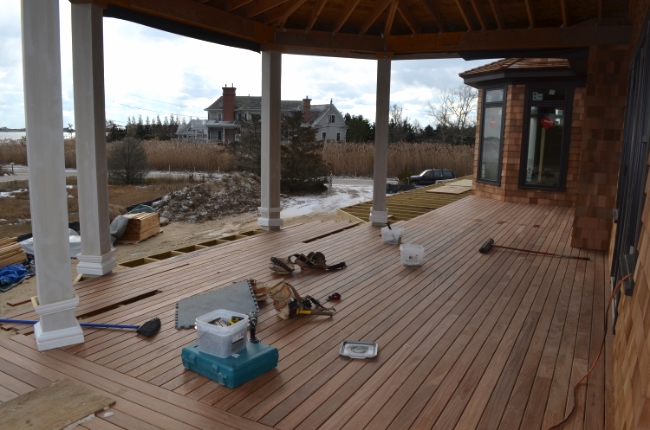If your home is like mine, it has old bathroom fans that make a terrible racket when turned on. They may or may not clear the humid air from the room when you shower. And, in all likelihood, if they’re more than a couple of years old, they use a lot of energy when you run them.
For this month’s Practical Sustainability column, we swapped out all of the bathroom fans in our home – and challenge you to do the same.
Why do Bathroom Fans Matter Anyway?
Bathroom fans are important for maintaining healthy indoor air quality. Moisture is a home’s enemy. Particularly in a bathroom, where the humidity level rises significantly when a shower is in use, excessive moisture can lead to cracking paint, damaged wall board, warped cabinet doors and deterioration of structural framing. Unchecked humidity provides conditions under which mold, mildew and other bacteria can grow and cause occupant health problems.
When we think about proper bathroom ventilation, we need to consider how a fan:
- Protects the structural integrity of a home
- Promotes healthy indoor air quality
- Contributes to occupant comfort, and
- Delivers energy efficiency
Bathroom fans are specified using several performance measures:
- Amount of air they move in cubic feet per minute (cfm)
- Noise level, expressed in sones (a measure of how loud a sound is perceived to be). The sone scale is linear: four sones is perceived as twice as loud as two sones
- Energy use (generally expressed in watts, or watts/cfm when comparing models with different fan speeds)
Our Challenge
We live in a 100-year-old apartment building where our only access to the bathroom fans is from below the existing ceiling. When we purchased the apartment 13 years ago, we installed ducts to the outside and added fans to each bathroom. But the fans were extremely noisy and were energy hogs. While the fans did a good job of clearing the air during our showers, we had one bathroom in which we experienced some mildew growth on the ceiling. Our challenge was to replace all of the bathroom fans with quieter models that use less energy. And, most importantly, we had to complete the retrofit without undertaking a major renovation. After all, this is Practical Sustainability, and – if you have been following this series – we try to provide practical ideas that don’t require major investment.
I contacted Broan, Delta and Panasonic, three top manufacturers of bathroom ventilation, and asked each company how we might address our needs. Each company sent several bathroom fans for me to try out – ranging from their top-of-the-line models to their entry-level models. Although they make fans of many sizes, each company also sent fans that could use practically the same “footprint” as the fans that we were replacing, just in case we encountered problems in our ceilings that would make it difficult to modify them for a larger fan.
John Hite, the owner of New Jersey based Hite Construction, has been a friend for over 20 years and, when I told him what I planned to do, he offered to send his crew to my apartment to oversee the work. John does the vast majority of his work in New York City, where there are no quirky conditions he hasn’t yet encountered. While adding bathroom fans to existing apartments isn’t always possible (some buildings, and occasionally the NYC Landmarks Commission, prohibit making penetrations through building facades), John says that most renovations will include bathroom fans where possible. The greatest concern he hears from homeowners and design professionals is noise minimization.
Our Results
I was very happy to have Isai and Mike from Hite Construction along to help me with the retrofit. We tried a fan from each of the three manufacturers in each of three bathrooms. Here are the results:
Bathroom #1: Broan Model 690 Bath Fan Upgrade Kit
In a 100-year-old building, where you’re accessing everything from below the ceiling, you can’t always choose an ideal placement during construction. For some reason, our bathroom fan had been installed up against a corner of a niche in the shower. And the fan was installed before the walls and ceiling were tiled with 12” x 12” marble. When we investigated replacing the bathroom fan, we discovered that we could not remove the old housing without removing the wall and ceiling tiles from around it – and that was a can of worms we were not willing to open up.
Thankfully, Broan NuTone had included the Model 690 Bath Fan Upgrade Kit with the fans they had sent us. The 13-year-old fans we were replacing were Broan model 688 fans, which are still manufactured today and are typically used by contractors for their low cost and ease of installation. But the fans are noisy at 4 sones, and only draw 50cfm.


